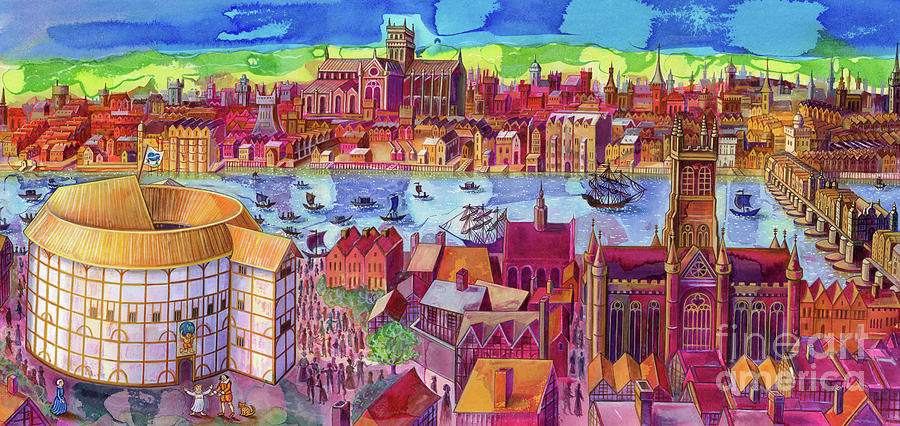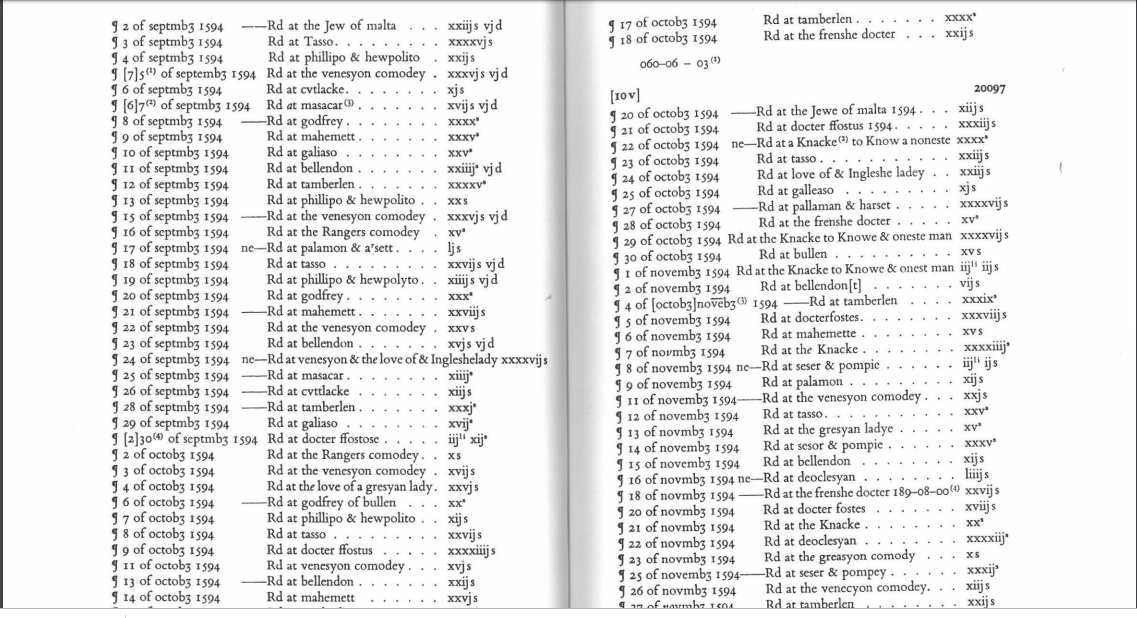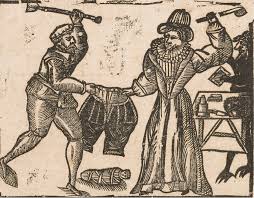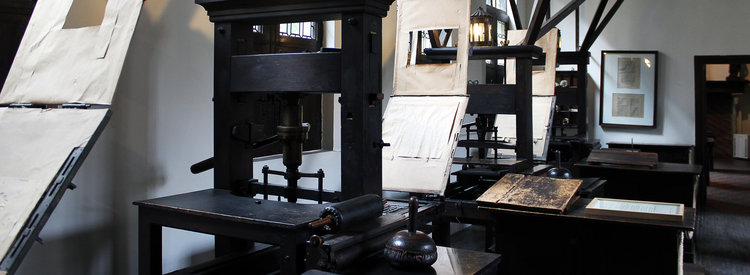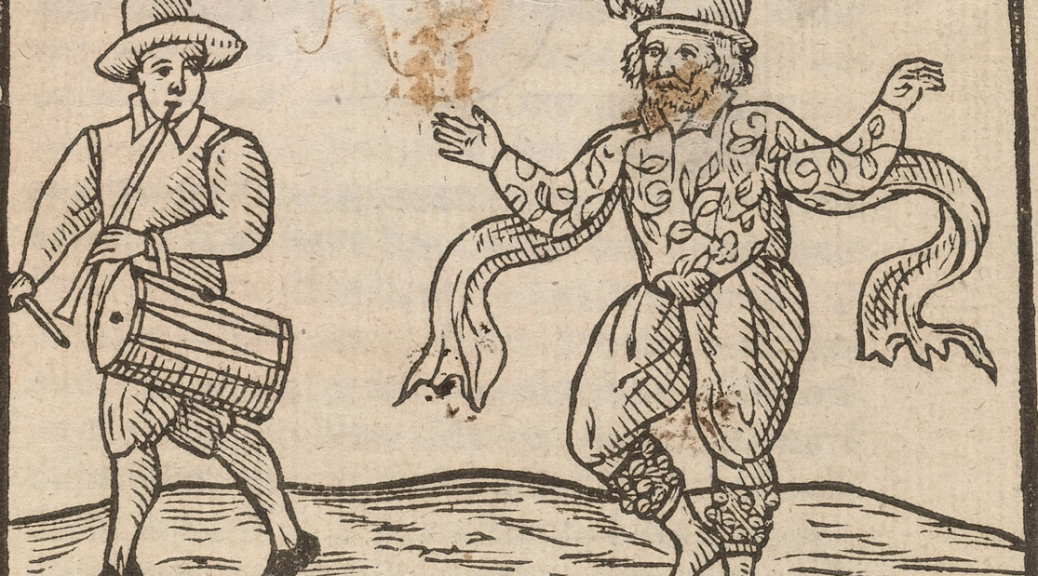The Theatrical Time Manipulation Company.
 Lords and Ladies, warlocks of this age of technological wonder, please take a moment from your busy lives and buzzing devices to consider the past. Once shrouded by the time manipulation legislation, the no deal Galaxy E-exit (Earth Exit) has allowed us to take control of our own spacetime. For the small price of £1bn we are allowing you the opportunity to travel back in time to renaissance England:
Lords and Ladies, warlocks of this age of technological wonder, please take a moment from your busy lives and buzzing devices to consider the past. Once shrouded by the time manipulation legislation, the no deal Galaxy E-exit (Earth Exit) has allowed us to take control of our own spacetime. For the small price of £1bn we are allowing you the opportunity to travel back in time to renaissance England:
It is my honour to be able to present to you an exclusive experience of Shakespearean theatre in London! I have had the privilege of going behind the curtain to present to you now: the mechanics of the theatre.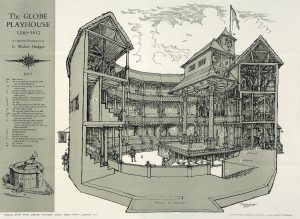
Have you ever wondered how Elizabethan actors (renowned for performing multiple parts of multiple plays in a single week) are actually capable of this? One way they approached this was by using cue lines – a way of writing scripts which only gave an actor a copy of their own written lines, interjected with a prompt word or phrase they would listen out for to known when to come onstage or start speaking. In fact, often actors would never even hear the play in full before it was performed – which is why often there could be confusion or miscommunication onstage. (1)
I am also free to share why you can expect to see so many plays which use a tragic structure – typically ending with the death of multiple main characters. This trend was born due to the fact that many audience members tended to lose interest and leave the play once characters played by well known and liked actors died. This encouraged Shakespeare, along with other playwrights, to begin to group the deaths of the characters in the end scene more and more. Therefore, this version of celebrity and popular culture began to directly influence the structure and conventions of some plays. (2)
Actors in Shakespeare’s time were When you sign up for our Mega Premium Package, not only will you be able to watch up to five plays, but you will also be able to watch the same play under different circumstances. Hurl fruit at Kempe the slow-witted fool (Stern, 67) as he improvises yet another line (67). Then, not even a day later, allow your child to experience the merriment of hurling the very same apple at the so-called ‘wise’ fool Robert Armin during one of his pretentious performances (70). Stare in awe as Richard Burbage nails yet another line (72), and then immediately travel to the very first performance of Hamlet right after Burbage’s death, and join the masses in booing the mediocre replacement off the stage. Witness the theatre of the past, where actors only received one or two rehearsal before being thrust onto the stage to fumble their lines (87); where female characters were preformed by boys, who may, on occasion, sing without missing notes (71). Witness these boys’ journey as they grow from pre-pubescent actors to men (70). Buy our Mega Premium Package today for an incredible 5% discount.
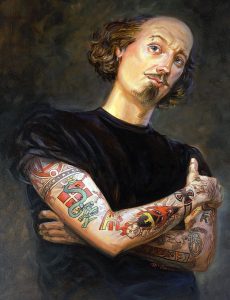
Reviews:
“Once we departed the floating flickering cities of the year 22149, there was a momentary pause. The assistant who took our payments at the beginning of the day before making us wait for however long, assured us everything was okay and that ‘this was normal’. After a few shakes and shudders the lift dropped suddenly. He handed each of us our individual guises, mine consisted of a silk doublet, coloured garters and embroidered gloves. We were told to keep our heads down and hands firmly into our pockets, the whole experience felt strange and alien, not surprising I guess considering the 6-century gap. However, slightly disappointed with the overall experience, the way my fiancé described it made it sound an unmissable opportunity. So far, I have had to hop over numbers of beggars, stepped into puddles of faeces every ten metres and also am now dressed up in all the colours of the old world. It was 1:45 pm and we were slowly walking down Southbank, there was a mass of people outside the front and in my mind, I thought we’d be outside for hours. We paid for the best seats in the house, 4 English pennies, not to just be able to see everything but ‘to be seen as well’, a young man dressed in a waistcoat and perfectly polished shoes offered us tea and ale. Looking around the theatre, I realised quickly it was an open-air theatre, my mind became concerned for the ruffians in the standing area, huddling together for warmth, all of this so they can watch Mr Burbidge prance around.”

Disclaimer:
The Theatrical Time Manipulation Company cannot be held responsible for the contraction of any ancient diseases, loss of personal belongings, loss of life, witch persecution or visits to the gallows.
Tiffany Stern, ‘Rehearsal, performance and plays’
“Lesser actors may never have heard in full the text of the play in which they were to perform…Actors would be given their separate parts to take home and learn. These parts consisted of their own lines only…” (p76-77)
“The playwright Glapthorne, in his Ladies Privilege (1640), refers to spectators who make the author ‘end his play before his plot be done’: the onlookers had a disturbing tendency to go away before the play was fully over.” (p73)

